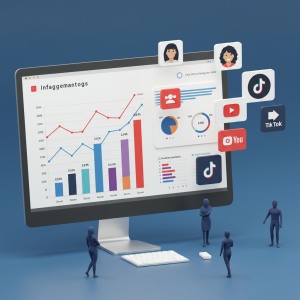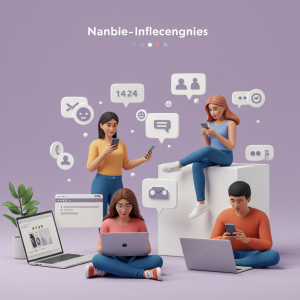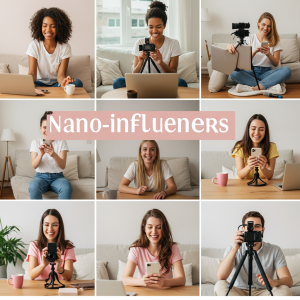Influencer outreach: a guide for building your strategy
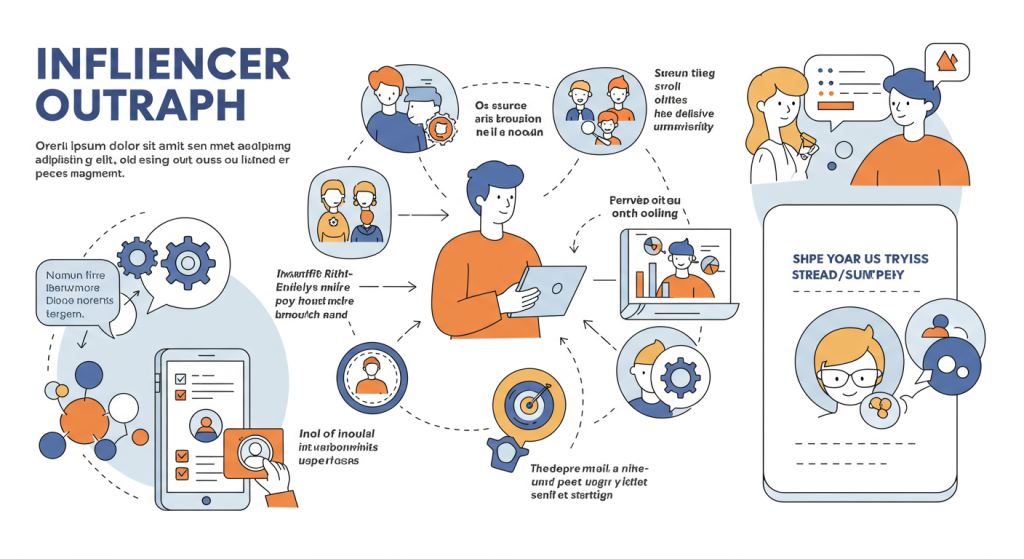
Finding the right influencers to promote your brand can feel like searching for a needle in a haystack. With millions of creators across platforms like TikTok, Instagram, and YouTube, how do you identify the ones who will genuinely connect with your audience and drive results? The answer lies in a well-crafted influencer outreach strategy.
An effective strategy is more than just sending a generic DM to a creator with a large following. It’s a systematic approach to identifying, contacting, and building relationships with influencers who align with your brand’s values and goals. This process ensures your message reaches the right people through a trusted voice, making your marketing efforts more authentic and impactful.
Define your campaign goals
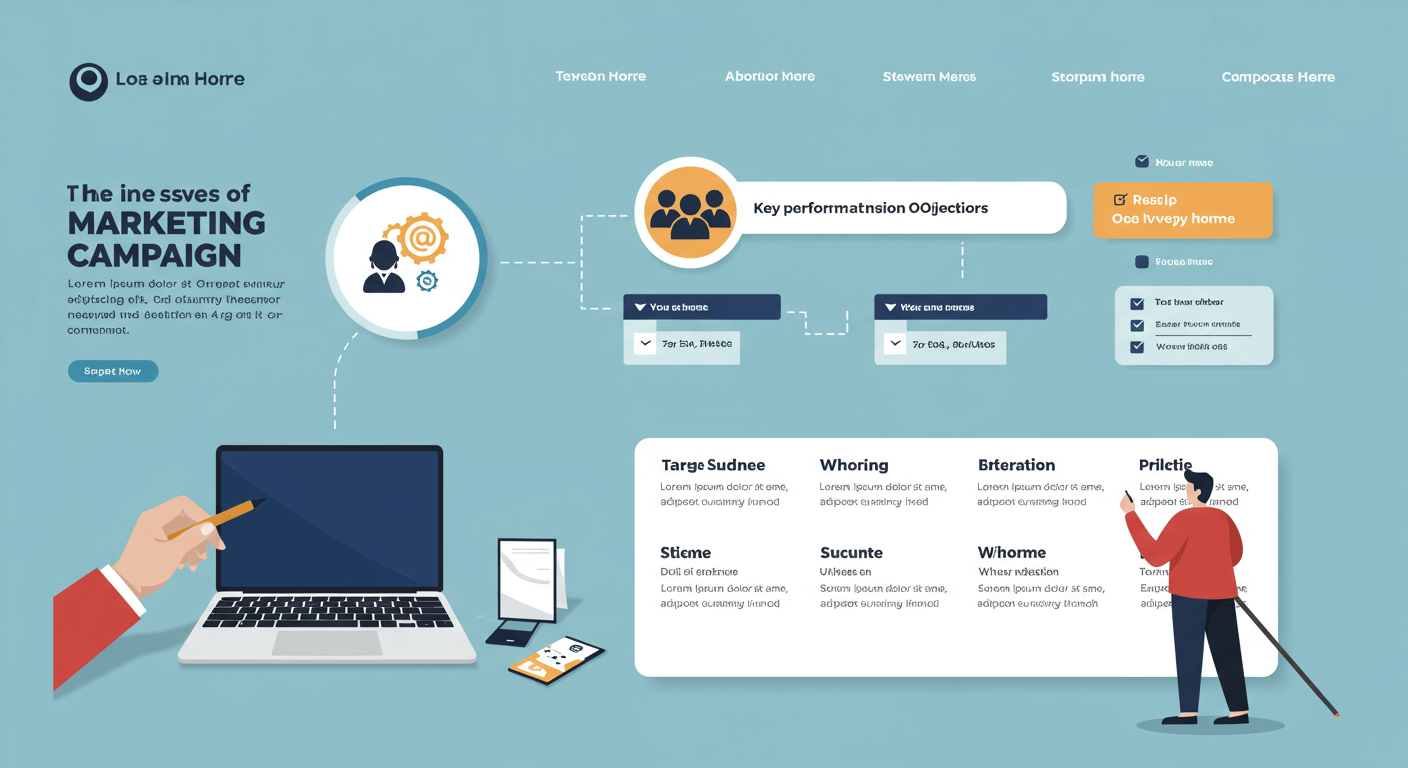
Before you even think about contacting an influencer, you need to know what you want to achieve. A clear set of goals will guide every decision you make, from the type of influencers you partner with to the metrics you use to track success. Without this direction, your campaign can easily lose focus and fail to deliver meaningful results.
Your goals should be specific, measurable, achievable, relevant, and time-bound (SMART). Common objectives for an influencer marketing campaign include:
- Increasing brand awareness: Reaching a new, targeted audience to make them familiar with your brand.
- Driving website traffic: Directing an influencer’s followers to your website or a specific landing page.
- Generating leads: Collecting contact information from potential customers through a sign-up form or giveaway.
- Boosting sales: Encouraging followers to make a purchase using a unique discount code or affiliate link.
- Promoting a new product: Building hype and generating initial sales for a new launch.
For example, a startup selling eco-friendly cleaning products might set a goal to “increase website traffic by 20% and generate 100 new leads in the next quarter by partnering with sustainability-focused micro-influencers.” This clear objective sets the stage for the entire strategy.
Find the right influencers
Once your goals are set, the next step is to identify influencers who can help you achieve them. This is arguably the most critical part of your strategy. Partnering with the wrong influencer can waste your budget and even damage your brand’s reputation.
Know your audience
Start by looking at your own target audience. What are their interests, values, and online behaviours? What kind of content do they engage with, and who do they follow for recommendations? The influencers you choose should have a following that mirrors your ideal customer profile.
Look for alignment
The best partnerships are built on shared values. Look for creators whose content, style, and personal brand align with yours. If your brand is all about high-end luxury, partnering with a budget-focused creator will create a disconnect. Authenticity is key, and followers can spot a forced collaboration from a mile away.
Analyze their metrics
Don’t be swayed by follower count alone. A high number of followers doesn’t always translate to high engagement. Look for influencers with a strong engagement rate, which is the percentage of their followers who like, comment on, and share their posts. A good engagement rate (typically 2-3% or higher) indicates an active and loyal community. Also, check the comments to see if they are genuine or filled with bots.
Where to find influencers
- Manual search: Browse relevant hashtags on platforms like Instagram and TikTok. Look at who your competitors are working with and who your target audience is already following.
- Influencer marketing platforms: Tools like Upfluence, Grin, and AspireIQ can help you discover influencers based on specific criteria like niche, location, engagement rate, and audience demographics. These platforms often provide detailed analytics to help you make informed decisions.
- Google search: Simple search queries like “top sustainable fashion bloggers” or “best tech YouTubers” can be a great starting point.
Craft your outreach message
Your first message to an influencer is your one shot to make a great impression. A generic, copy-and-paste email is likely to be ignored. A personalized, thoughtful message shows that you’ve done your research and genuinely value a potential partnership.
Personalize your approach
Start by addressing the influencer by name. Reference a specific piece of their content that you enjoyed. For example, “Hi [Influencer Name], I loved your recent video on zero-waste kitchen swaps. Your tips were so practical!” This immediately shows that you’re not just another brand sending out a mass email.
Be clear and concise
Influencers are busy people who receive dozens of pitches every day. Get straight to the point. Clearly explain who you are, what your brand does, and why you think a partnership would be a good fit. Outline what you’re proposing, whether it’s a one-off sponsored post, a long-term ambassadorship, or a product review.
Highlight the value for them
What’s in it for the influencer? While compensation is important, it’s not the only thing that matters. Highlight other benefits of working with your brand. Perhaps you offer a product they would genuinely love, an opportunity to co-create content, or exposure to your brand’s audience. Frame the partnership as a mutually beneficial relationship.
Include a clear call to action
End your message with a clear next step. Do you want them to reply if they’re interested? Should they book a call to discuss further? Make it easy for them to respond. For example, “If this sounds like a good fit, I’d love to set up a quick 15-minute call next week to share more details.”
Negotiate terms and compensation

Once an influencer expresses interest, the next step is to discuss the specifics of the collaboration. This includes deliverables, timelines, and compensation. Be prepared to negotiate.
Compensation can take many forms:
- Free product: This is often suitable for micro-influencers or when you’re just starting out.
- Flat fee: A one-time payment for specific deliverables, such as one Instagram post and three stories.
- Affiliate commission: The influencer earns a percentage of the sales they generate through a unique link or code.
- Hybrid model: A combination of a flat fee and an affiliate commission.
Make sure all agreed-upon terms are documented in a formal contract. This should outline the scope of work, content usage rights, payment terms, and any FTC disclosure requirements. A contract protects both you and the influencer and prevents misunderstandings down the line.
Measure your results
Your work isn’t done once the content goes live. To understand the effectiveness of your influencer outreach strategy, you need to track your performance against the goals you set at the beginning.
Key metrics to monitor include:
- Reach and impressions: How many people saw the content.
- Engagement rate: Likes, comments, shares, and saves.
- Website traffic: Use UTM parameters to track clicks from the influencer’s content to your website.
- Lead generation: The number of new leads captured through the campaign.
- Sales: Track conversions using unique discount codes or affiliate links.
Analyzing these metrics will help you understand what’s working and what’s not. Did a particular type of content perform exceptionally well? Did one influencer drive more sales than another? Use these insights to refine your strategy for future campaigns and build long-term relationships with your top-performing partners.
What’s Next for Your Brand?
Building a successful influencer outreach strategy is a continuous process of learning and refinement. It requires clear goals, careful research, personalized communication, and consistent measurement. By treating influencers as long-term partners rather than one-off marketing channels, you can build authentic relationships that drive lasting value for your brand.
Start small, test different approaches, and scale what works. With a strategic and thoughtful approach, you can harness the power of influencer marketing to connect with your audience in a meaningful way and achieve your business objectives.
Frequently Asked Questions
What’s the difference between micro- and macro-influencers?
Macro-influencers typically have a large following (100,000+), offering broad reach. Micro-influencers have a smaller, more niche audience (1,000 to 100,000 followers) but often boast higher engagement rates and a more dedicated community. Your choice depends on your campaign goals—brand awareness may call for a macro-influencer, while driving sales in a specific niche might be better suited for a micro-influencer.
How much should I pay an influencer?
Compensation varies widely based on the influencer’s follower count, engagement rate, industry, and the scope of the campaign. Some micro-influencers may accept free products, while top-tier macro-influencers can command thousands of dollars per post. Research industry benchmarks and be prepared to negotiate a fair rate that reflects the value they bring.
How do I ensure influencers comply with disclosure guidelines?
The FTC requires influencers to clearly disclose sponsored content. This can be done using hashtags like #ad or #sponsored. It’s your responsibility to inform your partners of these legal requirements and include them in your contract. Failure to do so can result in penalties for both your brand and the influencer.

